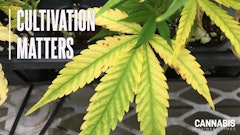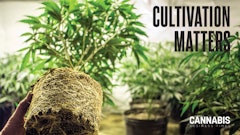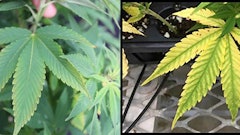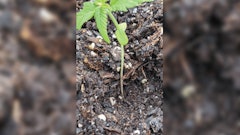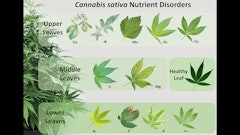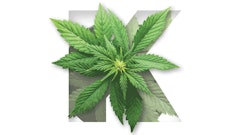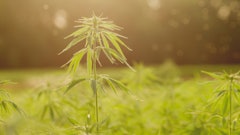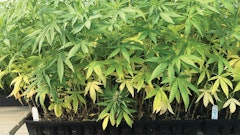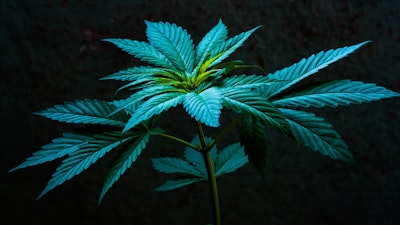
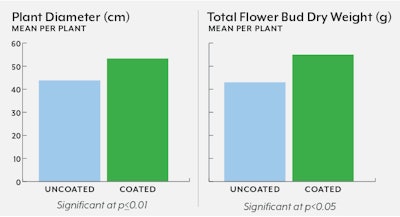
Silicon (Si) has been touted as a miracle chemical by many. It is the second-most abundant element of the Earth’s crust, at 25.7% by weight, according to Alina Kabata-Pendias, a Polish researcher who specialized in soil science and trace elements. Much of the Si on Earth is tied up in silicate forms, such as quartz, that are unavailable for plant uptake. Nevertheless, with natural weathering, abundant Si becomes available in the soil for plants. With Si being prevalent on Earth, it has become an important element for some plant species and can improve plant growth and prevent disease. That said, Si is classified as a beneficial element, not an essential one, because it is not required for the plant to complete its lifecycle.
Si Research Overview
Silicon research trials have been conducted with several species. The most dramatic advantages of Si are reported with rice—Si boosts yield, improves stem strength, and provides disease protection. Rice readily takes up Si and can accumulate up to 10% Si in hulls, according to research published in Doklady Washnil (Washnil Documents, a journal based in the former Soviet Union) in 1989. Other grass species, sedges, horsetails, and leguminous species also accumulate higher concentrations of Si.
Si supplementation has been studied in a number of horticultural crops. Si can help prevent diseases such as powdery mildew in roses and cucumbers, according to Canadian researchers. Studies conducted in 1982 at Okayama and Kyoto universities in Japan showed that low dose Si additions also boost cucumber yield. Small doses of Si can be effective, while excessive levels can hinder plant growth and cause precipitates (solids) to form, rendering other elements unavailable or clogging drip irrigation systems, according to Dutch researchers.
The same Dutch researchers also noted the challenges of adding Si to fertilizer concentrate solutions because a higher solution pH of >9 is required for the Si to be available to plants. If the solution pH is too low, then the solubility of the Si concentrate has the tendency to form precipitate and diminish plant availability. Most fertilizer solutions used in greenhouse production are acidic when mixed, with most typically around pH 4. Therefore, Si supplements require their own stock tank if mixed with other fertilizers or supplied independently. Also, the optimal substrate pH for cannabis is between 5.5 and 6.5. All these factors make balancing Si availability to plants a challenge.
Limited information is available about how Si affects cannabis growth and development. Most of the current recommendations are based on testimonials and observations, not scientifically conducted research. At North Carolina State University (NCSU), the authors studied the effects of coating Si on perlite to provide Si to plants and avoid the challenges of supplying it as a supplement. The results of the scientifically designed, repeated blind study are from a NCSU research project financially supported by Harvest Hero, Dicaperl Minerals LLC.
Silicon-Coated Perlite Research Results
In the NCSU study, researchers blended a 70% peat and 30% perlite substrate. To aid irrigation, researchers added a wetting agent to the substrate in addition to dolomitic lime to obtain a substrate pH of 6. The variable was the perlite formulation. One set of plants had uncoated perlite, while the other substrate mixture used a coated perlite mix that included Si and a low level of potassium phosphate. (Si chemically bonds to potassium phosphate for plant delivery.)
Clones of the CBD cultivar ‘BaOx’ were transplanted into the substrates, grown vegetatively over four weeks before inducing flowering with long nights. Researchers measured growth parameters during the experiment and cannabinoid profiles at the end of the study.
Researchers found plants grown in perlite coated with Si had larger diameters (Fig. 1). Nutrient uptake was also higher in plants using coated perlite. Nitrogen, phosphorus, potassium, and sulfur concentrations were higher in the plants with the Si perlite blend compared to the uncoated perlite.
There was a 28% increase in the total bud dry weight produced by each plant grown in the coated perlite blend (Fig. 2). In addition, the total CBD production per plant was 16% greater with the coated perlite versus uncoated. Based on these trials, the addition of Si improved overall plant performance and yield.
Conclusions
Using Si in plant production has been reported to defend crops against diseases such as powdery mildew, and increase stem strength and improve yield. Si may be beneficial to cannabis growers, as well. The NCSU trials indicate that plant growth and CBD yield were enhanced using Si, making this an option for cannabis growers to consider if they are using a peat and perlite blended substrate mix to grow plants. Researchers did not evaluate disease suppression, though that’s another avenue growers can explore.











